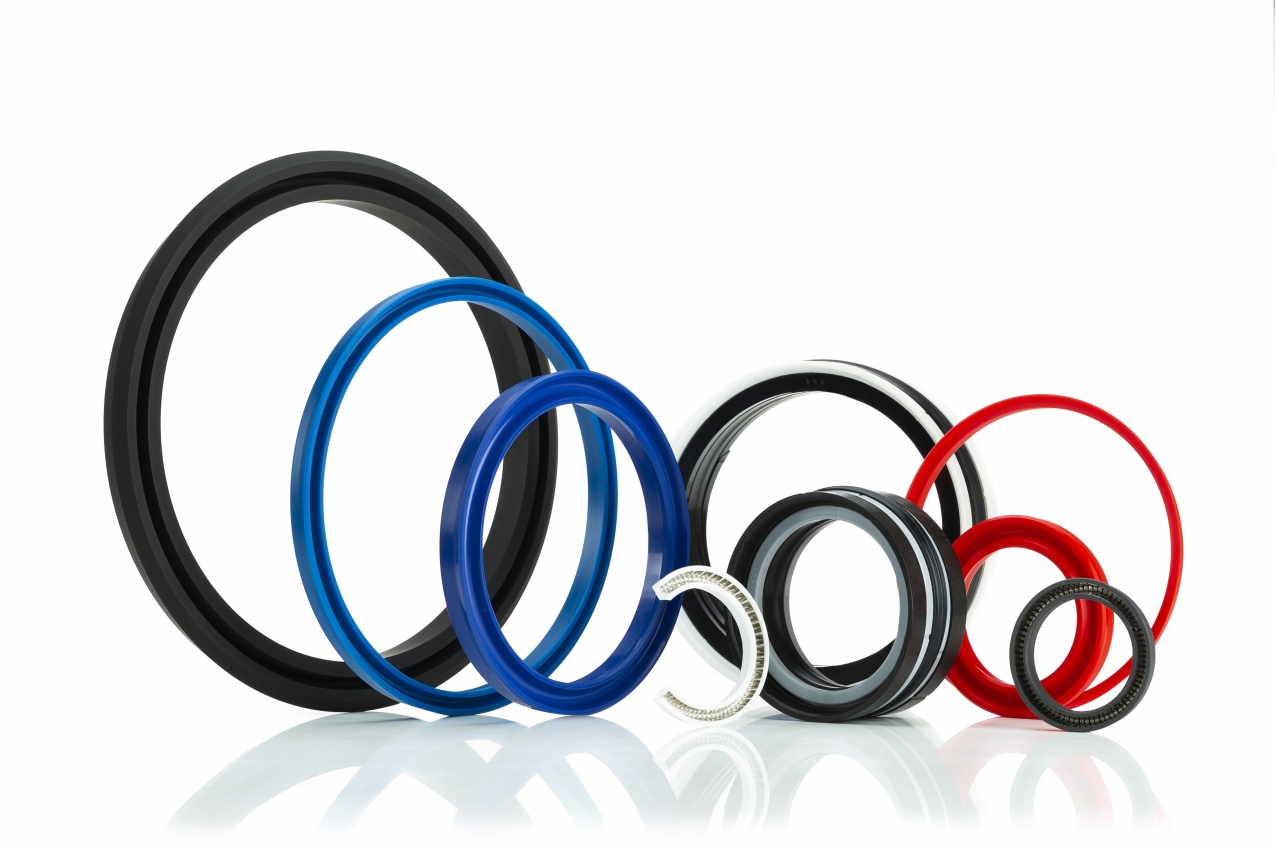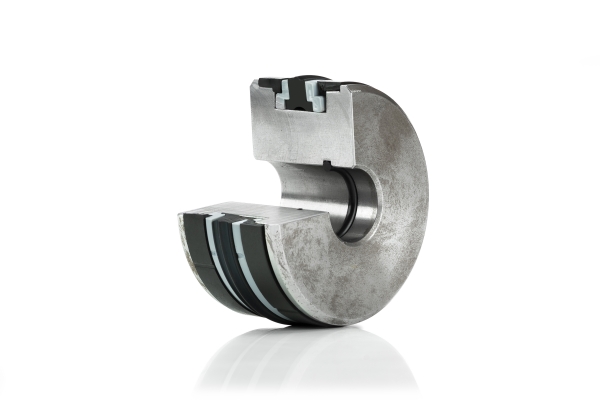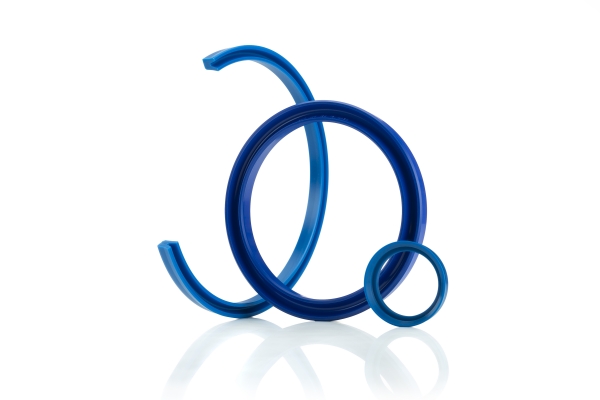-
Homepage
-
Seals and Gaskets
-
Standard Profiles
- Piston Seal
Piston Seal - Sealing of a moving piston
A piston seal seals a movable piston between two chambers. These seals are mounted on the piston. On the piston side, the seal is therefore static. The sealing gap between the cylinder housing and the piston is dynamically sealed.
A piston seal therefore seals with the outer diameter, which is why it is referred to as an outer sealing seal. In contrast, the rod seal is mounted in the cylinder housing and seals to the piston rod (internally sealing).
What types of piston seals are there?
Purchasing piston seals - What types are available in sealing technology?
You can purchase your piston seals from Kofler - Dichtungen. Available options include the traditional asymmetrical gasket rings (with supporting ring) and lip rings, as well as multipart compact seals. These compact seals can be designed as so-called double-acting seals.
Double-acting seals are capable of being pressure-loaded from both sides. The most commonly used double-acting piston seals are the Piston Compact Seals (KK).
Depending on operating conditions, the piston seals can additionally be pre-tensioned with an O-ring or a metal spring. This pre-tensioning mounts the seals under pressure, thus providing pre-compression against the sealing surfaces. This approach can result in higher seal tightness, even without any system pressure.
Gland packings that comprise an O-ring and a gland ring (typically made from PTFE or PU) are also available in a double-acting variant. In contrast to traditional gland packing seals, these piston seals feature a straight sealing surface instead of a graduated one.
Seals used in industry are subject to particular requirements, distinguished by exceptionally long lifespans, high performance, and robust load capacity. We fulfill these demands through our technical expertise, the employment of premium materials, and ongoing quality checks. Explore our sectors where we apply our sealing knowledge.
In pneumatics, the frictional conditions and the pressure medium differ from those in hydraulic cylinder seals. The increased sliding friction imposes different requirements on the piston seal. Thus, for this application, we offer specially adapted shapes and versions of pneumatic piston seals. We provide a range of hydraulic and pneumatic seals! Also, learn more about – What exactly is a hydraulic seal?.
Order Piston Seal Materials
The materials for piston seals are matched to the specific applications and areas of application. Piston seals must withstand high pressures and large mechanical loads. Chemical resistance to the hydraulic medium is a must even at high temperatures.
We use modern, high-performance plastics in our seals. Common materials and sealing materials for piston seals are, for example,
- PU (polyurethane) or
- NBR (Nitrile Butadiene Rubber)
but also various PTFE compounds – i.e. a PTFE seal or a PTFE piston seal with fillers such as bronze, carbon or MOS². Of course, we produce piston seals from many other materials in a wide variety of designs – depending on the area of application.
NBR Seal and Gasket
NBR (Nitrile Butadiene Rubber) is produced in a chemical reaction of acrylonitrile and butadiene. NBR is then subjected to thermal or chemical vulcanization.
NBR seals are mechanically particularly resistant and ideally suited for fuel lines and seals with oil contact, for example as hydraulic seals, radial shaft seals.
NBR is moderately stable to hot acids and alkalis.
These high-performance materials cover a wide range of strength, pressure resistance, operating temperature, chemical resistance and elasticity for the sealing element. This allows us to provide you with a special seal in almost any application.
If you need help choosing a design and material combination, you can simply contact us. We will be happy to advise you and manufacture seals tailored to your application and operating conditions.
Piston Seal (Piston Sealing Ring) - How does proper installation work?
Primarily, the installation of a piston seal depends on its specific design, which can vary in complexity. For all piston seals, whether for Liebherr or Zeppelin earth moving equipment, the following guidelines apply regardless of the design: Both the piston seal and the installation space must be undamaged and clean. This means the surfaces must be free from dirt, dust, or similar contaminants. Any sharp edges or burrs on metal parts must be removed before installation to prevent damage to the seals
Installation of Groove Rings and Lip Seals
A snap ring or lip seal can usually be pulled over the piston by hand.
For compact seals, it is recommended to use a narrow, tear-resistant strip, such as standard packing tape. The elastic sealing element should be positioned at one end within the groove, and the piston should be clamped in a vise (using protective jaws is advised).
The packing tape can then be threaded through the seal ring and fashioned into a loop. Using this loop, the seal can be drawn over the piston in swift, yet cautious motions. After the tape is removed, the remaining split components can be assembled onto the piston.
The procedure for installing piston seals with glide rings follows a similar method. Initially, the O-ring is placed into the groove. Then, one end of the glide ring is laid in the groove, and the piston is secured in a vise. The packing tape is threaded through the seal ring and formed into a loop.
Using this loop, the ring can be pulled over the piston. While the seal will now be in the correct position, it may still be overstretched. Its original shape can be readily restored with a calibration tool. Alternatively, a suitable assembly sleeve can be used.
This approach is especially beneficial when frequently installing piston seals of the same size. We gladly offer to create a custom assembly sleeve for your specific piston seal requirements.
Below, you will find videos that showcase the assembly process for piston seals.
Special seals and development of sealing sets
Kofler - Dichtungen manufactures for you a piston seal, whether double-acting or single-acting, as a custom seal. Additionally, we can develop a complete seal set or piston seal set for your hydraulic seal system. Scrapers, O-rings, rod seals, sealing rings, guide rings, piston seals, and wiper seals (wiper seal set) can be made from various materials and elastomers (NBR, FPM, etc.) in the specified inner diameter. We also offer flat gaskets, shaft seals, and Simmerring seals. ALL the profiles mentioned below are available in ALL sizes and materials, ranging from 4 mm to 2,500 mm (0,15 in to 98 in). Register as a customer. You can add your standard seal to the cart and order online






